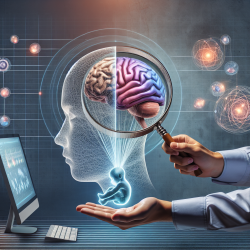Understanding Sensorimotor Dysfunctions in Autism Spectrum Disorders
Autism Spectrum Disorders (ASD) have long been associated with social-communication challenges and cognitive differences. However, recent research highlights the significant role of sensorimotor dysfunctions as primary features of ASD. This revelation opens new avenues for practitioners aiming to enhance their therapeutic strategies and better support individuals with ASD.
The Underestimated Role of Motor Dysfunctions
Historically, motor impairments in ASD have not received the same level of attention as other core features. Yet, studies indicate that these dysfunctions are not only prevalent but may also precede the emergence of social and communication deficits. This suggests that motor dysfunctions could serve as early markers for ASD, detectable even within the first year of life.
Research Highlights
The research article titled "Sensorimotor dysfunctions as primary features of autism spectrum disorders" by Mosconi and Sweeney (2017) delves into the neurophysiological substrates of motor skills in ASD. It suggests that motor deficits in individuals with ASD are linked to disruptions throughout the neuroaxis, affecting the cortex, striatum, cerebellum, and brainstem.
Implications for Practitioners
For practitioners, understanding the implications of these findings is crucial:
- Early Detection: Recognizing motor dysfunctions early can lead to earlier diagnosis and intervention, potentially improving outcomes.
- Targeted Interventions: Tailoring therapies to address specific motor impairments can enhance the effectiveness of interventions.
- Comprehensive Assessment: Including motor skill evaluations in diagnostic assessments can provide a more holistic understanding of an individual's needs.
Encouraging Further Research
While current research provides valuable insights, there are still gaps in our understanding of motor dysfunctions in ASD. Practitioners are encouraged to contribute to this growing body of knowledge by conducting further studies, particularly those that explore the developmental trajectory of motor skills in individuals with ASD.
Conclusion
Integrating findings on sensorimotor dysfunctions into clinical practice can significantly impact the way we understand and support individuals with ASD. By focusing on these often-overlooked aspects, practitioners can develop more effective, individualized treatment plans that address the unique needs of each individual.
To read the original research paper, please follow this link: Sensorimotor dysfunctions as primary features of autism spectrum disorders.










